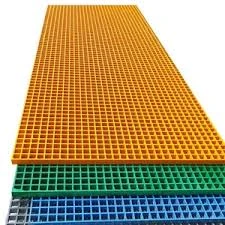
-
 Afrikaans
Afrikaans -
 Albanian
Albanian -
 Amharic
Amharic -
 Arabic
Arabic -
 Armenian
Armenian -
 Azerbaijani
Azerbaijani -
 Basque
Basque -
 Belarusian
Belarusian -
 Bengali
Bengali -
 Bosnian
Bosnian -
 Bulgarian
Bulgarian -
 Catalan
Catalan -
 Cebuano
Cebuano -
 China
China -
 China (Taiwan)
China (Taiwan) -
 Corsican
Corsican -
 Croatian
Croatian -
 Czech
Czech -
 Danish
Danish -
 Dutch
Dutch -
 English
English -
 Esperanto
Esperanto -
 Estonian
Estonian -
 Finnish
Finnish -
 French
French -
 Frisian
Frisian -
 Galician
Galician -
 Georgian
Georgian -
 German
German -
 Greek
Greek -
 Gujarati
Gujarati -
 Haitian Creole
Haitian Creole -
 hausa
hausa -
 hawaiian
hawaiian -
 Hebrew
Hebrew -
 Hindi
Hindi -
 Miao
Miao -
 Hungarian
Hungarian -
 Icelandic
Icelandic -
 igbo
igbo -
 Indonesian
Indonesian -
 irish
irish -
 Italian
Italian -
 Japanese
Japanese -
 Javanese
Javanese -
 Kannada
Kannada -
 kazakh
kazakh -
 Khmer
Khmer -
 Rwandese
Rwandese -
 Korean
Korean -
 Kurdish
Kurdish -
 Kyrgyz
Kyrgyz -
 Lao
Lao -
 Latin
Latin -
 Latvian
Latvian -
 Lithuanian
Lithuanian -
 Luxembourgish
Luxembourgish -
 Macedonian
Macedonian -
 Malgashi
Malgashi -
 Malay
Malay -
 Malayalam
Malayalam -
 Maltese
Maltese -
 Maori
Maori -
 Marathi
Marathi -
 Mongolian
Mongolian -
 Myanmar
Myanmar -
 Nepali
Nepali -
 Norwegian
Norwegian -
 Norwegian
Norwegian -
 Occitan
Occitan -
 Pashto
Pashto -
 Persian
Persian -
 Polish
Polish -
 Portuguese
Portuguese -
 Punjabi
Punjabi -
 Romanian
Romanian -
 Russian
Russian -
 Samoan
Samoan -
 Scottish Gaelic
Scottish Gaelic -
 Serbian
Serbian -
 Sesotho
Sesotho -
 Shona
Shona -
 Sindhi
Sindhi -
 Sinhala
Sinhala -
 Slovak
Slovak -
 Slovenian
Slovenian -
 Somali
Somali -
 Spanish
Spanish -
 Sundanese
Sundanese -
 Swahili
Swahili -
 Swedish
Swedish -
 Tagalog
Tagalog -
 Tajik
Tajik -
 Tamil
Tamil -
 Tatar
Tatar -
 Telugu
Telugu -
 Thai
Thai -
 Turkish
Turkish -
 Turkmen
Turkmen -
 Ukrainian
Ukrainian -
 Urdu
Urdu -
 Uighur
Uighur -
 Uzbek
Uzbek -
 Vietnamese
Vietnamese -
 Welsh
Welsh -
 Bantu
Bantu -
 Yiddish
Yiddish -
 Yoruba
Yoruba -
 Zulu
Zulu
fiberglass duct
The Benefits and Uses of Fiberglass Ducts
Fiberglass ducts have emerged as a popular choice in modern HVAC (Heating, Ventilation, and Air Conditioning) systems, owing to their unique properties and advantages. Composed primarily of glass fibers and resin, these ducts provide a robust and versatile solution for air distribution in commercial and residential buildings.
One of the primary benefits of fiberglass ducts is their excellent insulating properties. The material inherently possesses a high R-value, which measures thermal resistance. This means that fiberglass ducts are efficient at maintaining desired temperatures, reducing energy loss and contributing to energy savings. In a world increasingly concerned about energy efficiency, the use of fiberglass ducts can substantially lower heating and cooling costs.
Another significant advantage of fiberglass ducts is their resistance to moisture and corrosion. Traditional metal ducts can succumb to rust and degradation over time, especially in environments with high humidity. In contrast, fiberglass ducts are not affected by moisture, which makes them ideal for humid climates or installations where condensation might be an issue. This resistance extends the lifespan of the ducts, making them a more cost-effective option in the long run.
Fiberglass ducts also offer remarkable noise reduction. The porous structure of fiberglass material absorbs sound waves, which helps to minimize the noise generated by airflow. This feature makes fiberglass ducts an excellent choice for sound-sensitive environments, such as hospitals, schools, or residential areas. By using fiberglass ducts, building owners can achieve a quieter indoor environment without compromising on air distribution efficiency.
fiberglass duct

Installation of fiberglass ducts is relatively straightforward, as they are lightweight and easy to handle compared to traditional materials like sheet metal. Their lightweight nature allows for simpler and quicker installation processes, reducing labor costs and time. Moreover, the flexibility of fiberglass ducts can accommodate various configurations, making them suitable for a wide range of architectural designs.
In terms of maintenance, fiberglass ducts require less frequent cleaning and upkeep than metal ducts. Their non-porous surface helps prevent dust and mold accumulation, which can lead to poor indoor air quality. Regular maintenance is still necessary, but the hassle and costs associated with having to clean metal ducts are greatly reduced.
When it comes to sustainability, fiberglass ducts are manufactured using recycled materials, making them an eco-friendly option. This aligns with the growing demand for green building practices that prioritize energy efficiency and environmental responsibility.
Lastly, it’s essential to emphasize the importance of proper installation and design when utilizing fiberglass ducts in HVAC systems. Issues such as improper sizing or sealing can negate the inherent advantages of fiberglass. Collaborating with experienced professionals who understand the nuances of fiberglass ductwork is crucial for optimizing system performance.
In conclusion, fiberglass ducts offer a plethora of benefits, including energy efficiency, moisture resistance, sound insulation, ease of installation, low maintenance, and environmental sustainability. Their versatility makes them a valuable component in HVAC systems for various applications. As building standards and energy regulations continue to evolve, incorporating fiberglass ducts into design and renovation projects is not just a practical choice but also a forward-thinking one.
Latest news
-
Exploring the Benefits of Top Hammer Drifter Rods for Enhanced Drilling PerformanceNewsJun.10,2025
-
High-Precision Fiberglass Winding Machine for GRP/FRP Pipe Production – Reliable & Efficient SolutionsNewsJun.10,2025
-
FRP Pipes & Fittings for Shipbuilding - Corrosion-Resistant & LightweightNewsJun.09,2025
-
Premium FRP Flooring Solutions Durable & Slip-ResistantNewsJun.09,2025
-
Premium Fiberglass Rectangular Tanks Durable & Lightweight SolutionNewsJun.09,2025
-
Tapered Drill String Design Guide Durable Performance & UsesNewsJun.09,2025









